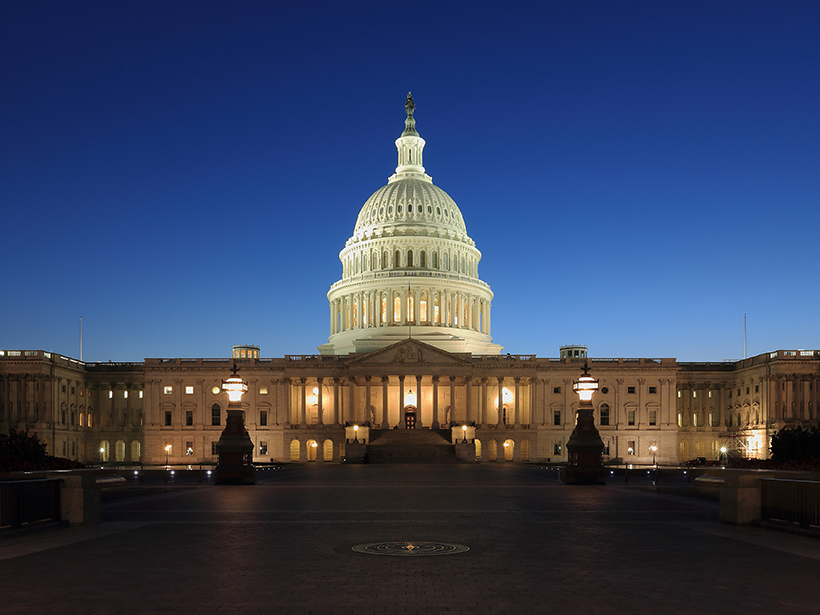“The best way to lead the future is to invent it,” Diane Souvaine, chair of the National Science Board (NSB), testified at a 29 January congressional hearing about the state of U.S. competitiveness with China and other countries on science and technology.
However, Souvaine and other witnesses, as well as members of Congress from both sides of the aisle, said that the United States needs to do more to maintain its leadership in these areas in the face of surging expenditures by China.
The hearing of the House Committee on Science, Space, and Technology followed up on NSB’s release of its “State of U.S. Science and Engineering 2020” report. That report, which is part of congressionally mandated Science and Engineering Indicators, shows that the United States in 2017 still maintained its lead over China regarding total research and development (R&D) expenditures.
The National Science Board “believes that China has already surpassed the United States in R&D investments.”
Souvaine noted in her written testimony, though, that trend lines in a figure in the report “suggest that in 2019 China may have surpassed the U.S. in total R&D expenditures.” In her oral testimony, Souvaine said that the NSB “believes that China has already surpassed the United States in R&D investments.” The NSB, which governs the National Science Foundation, serves as an independent adviser to the president and Congress.
In 2017, U.S. gross domestic expenditures on R&D totaled $548 billion in purchasing power parity (PPP) exchange rates and accounted for 25% of global R&D, down from 37% in 2000. In 2017, China’s PPP expenditures on R&D equaled about $500 billion and made up 23% of global R&D. In addition, China accounted for 32% of worldwide R&D growth between 2000 and 2017, whereas the United States accounted for 20% of growth. The European Union was third, accounting for 17% of growth.
“S&E [science and engineering] is now truly a worldwide enterprise—connected, complex, and interdependent, with more players and opportunities and humanity’s collective knowledge growing exponentially. While science is the endless frontier, we’re not the only explorer,” Souvaine said, referencing the landmark 1945 report Science: The Endless Frontier by Vannevar Bush.
“Staying at the forefront of S&E is essential for our economy and our security,” she added. “As other countries have invested in their own research enterprises, our share of global discovery and innovation has declined and will likely continue to decline. We are no longer the uncontested leader in S&E and we must adapt to changes in the world and in our country.”
Shared Priorities
Committee chair Rep. Eddie Bernice Johnson (D-Texas) said that U.S. leadership in science and technology has given U.S. companies a competitive advantage. However, she warned that the country “has already begun to face the consequences of our inability to make strategic and sustained long-term investments in our science and technology enterprise.”
“We have what it takes to lead. The question is, will we do what it takes?”
Although the federal government occasionally has “risen to the challenge” of providing more generously funded science and technology, “in the last 15 years, the nondefense research and development budget has stagnated,” Johnson said. “We have what it takes to lead. The question is, will we do what it takes?”
At the hearing, the committee’s ranking Republican, Rep. Frank Lucas (R-Okla.), said he is “a supporter of doubling the money that we spend on federally funded basic research in the next decade.”
Legislation that Lucas introduced on 28 January, the Securing American Leadership in Science and Technology Act, would authorize a doubling of basic research funding over the next decade at the Department of Energy, National Science Foundation, National Institute of Standards and Technology, and National Oceanic and Atmospheric Administration.
“I hope this legislative package will start a bipartisan conversation about what we need to do to ensure America leads the technological revolution of the 21st century.”
“I recognize that we are the minority party and that we do not get to set the agenda,” Lucas said. “But I believe we have many shared priorities and I hope this legislative package will start a bipartisan conversation about what we need to do to ensure America leads the technological revolution of the 21st century.”
Committee member Rep. Jerry McNerney (D-Calif.) commented that hearing Lucas say he strongly favors doubling the federal R&D budget “has got to be the most exciting thing that we’ve seen here” at the hearing.
Maintaining U.S. Leadership
Souvaine noted that the United States continues to lead in some key areas and that the U.S. “can-do attitude” can help maintain the country’s leadership. “Amid this dramatic growth in China’s R&D investment, it is crucial to note that the U.S. maintains a significant advantage in basic research—the seed corn for our entire S&E enterprise. In 2017, the U.S. invested $92 billion in basic research; China came in a distant second, investing $27 billion,” she said.
In addition to highlighting the need for increased U.S. investments in R&D, Souvaine said the country “must move aggressively to grow and diversify our domestic STEM [science, technology, engineering, and mathematics] workforce” and acknowledge the near-term reliance on foreign-born talent. She also called for recommitting to partnerships among government, universities, and the private sector, among other measures.
“This is our ask. Let’s not merely react to anxieties from global competitions, concern about security threats, or angst about constrained budgets. Instead, let’s act now before lagging indicators show that it’s too late,” Souvaine said.
—Randy Showstack (@RandyShowstack), Staff Writer
Citation:
Showstack, R. (2020), China challenges U.S. science dominance, Eos, 101, https://doi.org/10.1029/2020EO139794. Published on 04 February 2020.
Text © 2020. AGU. CC BY-NC-ND 3.0
Except where otherwise noted, images are subject to copyright. Any reuse without express permission from the copyright owner is prohibited.

